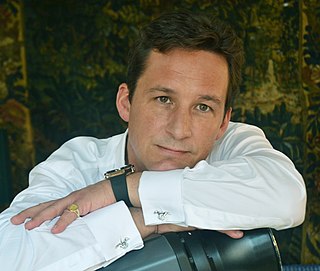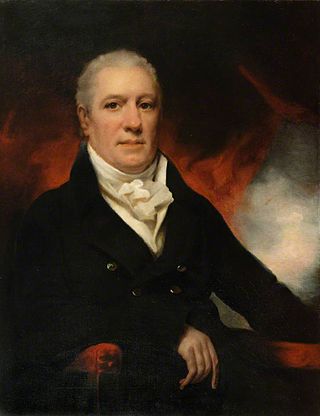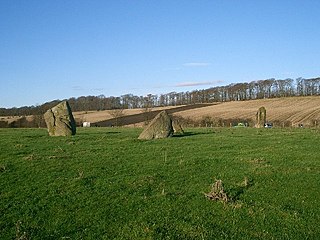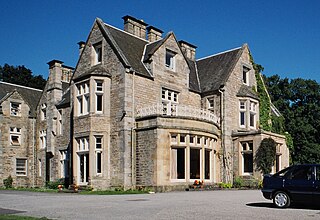
Fettes College is a co-educational private boarding and day school in Craigleith, Edinburgh, Scotland, with over two-thirds of its pupils in residence on campus. The school was originally a boarding school for boys only and became co-ed in 1983. In 1978 the College had a nine-hole golf course, an ice-skating rink used in winter for ice hockey and in summer as an outdoor swimming pool, a cross-country running track and a rifle shooting range within the forested 300-acre grounds. Fettes is sometimes referred to as a public school, although that term was traditionally used in Scotland for state schools. The school was founded with a bequest of Sir William Fettes in 1870 and started admitting girls in 1970. It follows the English rather than the Scottish education system and has nine houses. The main building, called the Bryce Building, was designed by David Bryce.

Torquhil Ian Campbell, 13th and 6th Duke of Argyll, styled as Earl of Campbell before 1973 and as Marquess of Lorne between 1973 and 2001, is a Scottish peer.
William Robert Ogilvie-Grant was a Scottish ornithologist.

David BryceFRSE FRIBA RSA was a Scottish architect.
Belhaven Hill School is an independent, co-educational preparatory school for boarding and day pupils aged 5 to 13 in Dunbar, East Lothian, Scotland. Set in 20 acres of beautiful grounds, Belhaven Hill has an idyllic, coastal setting which both children and staff treat as their playground and home.

Sir William Fettes, 1st Baronet was a wealthy Scottish businessman and philanthropist, who left a bequest which led to the foundation of Fettes College, in Edinburgh.

Torryburn is a village and parish in Fife, Scotland, lying on the north shore of the Firth of Forth. It is one of a number of old port communities on this coast and at one point served as port for Dunfermline. It lies in the Bay of Torry in south western Fife.

Cargilfield Preparatory School is a Scottish private co-educational boarding and prep school in Edinburgh, Scotland.
Stubbington House School was founded in 1841 as a boys' preparatory school, originally located in the Hampshire village of Stubbington, around 1 mile (1.6 km) from the Solent. Stubbington House School was known by the sobriquet "the cradle of the Navy". The school was relocated to Ascot in 1962, merging with Earleywood School, and it closed in 1997.
John Harold "J.H." Bruce Lockhart was a Scotland international cricket player; and a Scotland international rugby union player. He became a schoolmaster. He was part of the noted Bruce Lockhart family. He was also an artist.

Drumtochty Castle is a neo-gothic style castellated mansion erected in 1812 approximately three kilometres north-west of Auchenblae, Kincardineshire, Scotland. This building stands on the southern edge of Drumtochty Forest.
Capt. Eric Templeton Young was a Scottish rugby union player and British Army officer who was killed in the Gallipoli campaign in World War I.
Eastman's Royal Naval Academy, originally in Southsea and later at Winchester, both in England, was a preparatory school. Between 1855 and 1923 it was known primarily as a school that prepared boys for entry to the Royal Navy. Thereafter, it was renamed Eastman's Preparatory School and continued until the 1940s. According to Jonathan Betts, it was "considered one of the top schools for boys intended for the Navy".
Dalhousie Preparatory School was a private preparatory school in Scotland.

Croftinloan Preparatory School was a co-educational private preparatory school near Pitlochry, Scotland.
St Ninian's Preparatory School was a private preparatory school for boys in Moffat, Scotland.
Rear-Admiral Andrew John 'Jock' Miller was a senior Royal Navy officer.
William Roy Sanderson was a Scottish minister who served as Moderator of the General Assembly of the Church of Scotland in 1967. In 1961 he had organised the first meeting between a moderator and the pope. He was chaplain in ordinary to Queen Elizabeth II in Scotland.
Warriston School was a private preparatory school for boys in Moffat, Scotland. From September 1963 the school catered for pupils from ages 9–18. Warriston School was ultimately owned and run by Brian Larmour and his wife. Age group was from 10 to 18 years old. Warristonschool.com.








